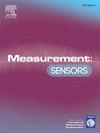智能配电网中电动汽车充电站和分布式发电机的优化规划与网络重构(考虑不确定性因素
Q4 Engineering
引用次数: 0
摘要
考虑到相关的不确定性,本文提出了一种优化规划技术,用于在径向配电网(RDN)中布置多个基于可再生能源(RE)的分布式发电机(DGs)、配电静态补偿器(DSTATCOMs)和电动汽车充电站(EVCSs)。该方法给出了 DG 和 DSTATCOM 的最佳位置和大小,以及通过考虑网络重构 (NR) 可在 EVCS 充电的电动汽车 (EV) 数量。EVCS 的优化分配可满足不同地点电动汽车的电力需求,并最大限度地减少对电网的负面影响。本研究考虑的可再生能源发电设备是太阳能光伏(PV)和风能。使用基于概率的两点估算法(2PEM)对与可再生能源发电设备和 EVCS 相关的不确定性进行了建模。通过使用基于教学的优化算法(TLBO)优化单个目标,即有功功率损耗和电压稳定指数(VSI),确定了最佳位置和规模。然后使用基于非支配排序的 TLBO 算法对这两个目标进行优化。此外,还在 IEEE 33 和 69 总线测试系统上实施了优化规划方法,以证明所提优化规划策略的适用性、实用性和效率。结果表明,建议的技术有利于在不影响电网稳定性的前提下确定风电机组、DSTATCOM 和 EVCS 的最佳位置。所提出的规划方法可以找到更好的网络结构,减少功率损耗和电压偏差,改善电压曲线,提高电压稳定性。本文章由计算机程序翻译,如有差异,请以英文原文为准。
Optimal planning of electric vehicle charging stations and distributed generators with network reconfiguration in smart distribution networks considering uncertainties
This paper proposes an optimal planning technique for placing the multiple renewable energy (RE) based distributed generators (DGs), Distribution Static Compensators (DSTATCOMs), and electric vehicle charging stations (EVCSs) in the radial distribution network (RDN) considering the related uncertainties. This approach gives optimal placement and sizes for DGs and DSTATCOMs as well as a number of electric vehicles (EVs) that can be charged at the EVCSs by considering the network reconfiguration (NR). The optimal allocation of EVCSs fulfills the power demand from EVs at various locations and minimizes the negative impact on the power network. The RE-based DGs considered for this work are solar photovoltaic (PV) and wind. The uncertainties related to RE-based DGs and EVCSs have been modeled by using the probabilistic-based two-point estimate method (2PEM). The best locations and sizes are identified by optimizing the individual objectives that is active power losses and voltage stability index (VSI) using the teaching learning based optimization (TLBO) algorithm. Then both objectives are optimized by using the non-dominated sorting-based TLBO algorithm. Furthermore, the optimal planning approach is implemented on IEEE 33 and 69 bus test systems to demonstrate the suitability, practicality, and efficiency of the proposed optimal planning strategy. The obtained results reveal that the proposed technique is beneficial for determining the optimal locations for DGs, DSTATCOMs, and EVCSs without affecting the grid stability. The proposed planning approach can search better network structure with reduced power losses and voltage deviation, enhanced voltage profile, and improved voltage stability.
求助全文
通过发布文献求助,成功后即可免费获取论文全文。
去求助
来源期刊

Measurement Sensors
Engineering-Industrial and Manufacturing Engineering
CiteScore
3.10
自引率
0.00%
发文量
184
审稿时长
56 days
 求助内容:
求助内容: 应助结果提醒方式:
应助结果提醒方式:


